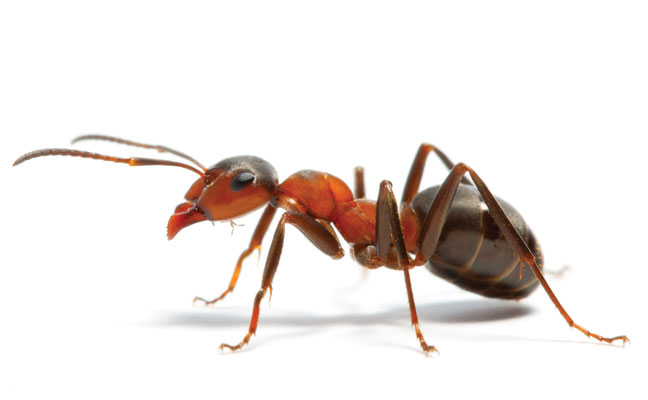
Photo: Antagain/iStock / Getty Images Plus/Getty Images
Question: Judy, is there a “best way” to prevent and control ants around homes?
— AVOIDING NEW TROUBLE
Answer: The simple answer is no, ANT, but I’m pretty sure that isn’t the helpful answer you were hoping for. Ants continue to be a top pest management lead driver in the residential market, so your question is very relevant.
There are so many species of ants that can cause issues that I’m going to stick to generalities. The best way to get rid of ants is to know which ant species you are dealing with, and if you have a customer long enough, you may run into different species at different times.
There are a lot of good active ingredients out there for ants, as well as a variety of formulations. I’m going to address some of the formulations and what you can do to increase their effectiveness when you use them. As you read through the list, you will see that getting control of an ant situation can be a significant labor commitment.
Before you treat, of course, you need to know which species you’re up against. With a good hand lens and a reference such as the National Pest Management Association’s Field Guide app, you should be able to identify the ants you find at your customer’s property. Once you have done this a few times, you will get very quick at identifying what is in your area. The one caveat I will add is that swarmers are notoriously difficult to identify. If all you have is swarmers, keep inspecting. You may be able to find a trail to collect some workers. It’s worth putting out some attractant, like sugar or protein, to see whether you can get any workers to come out of hiding for identification.
LIQUIDS

Judy Black, BCE
Liquid residual formulations often are primary tools in our defense against ants. Whether it is drenching mounds or creating a perimeter barrier, this formulation can be helpful. What could make you more effective when you use this tool?
- Mound drenches – Use enough to soak the mound. This means saturate; it does not mean spray a little on top of the mound. If you read about fire ants, the most suggested amount of drench for “large” mounds is two gallons. That may give you a better idea of how much you might need to use to soak a mound at your accounts.
- Perimeter barrier – While we as an industry usually do a good job of treating the foundation wall, we need to periodically check to ensure our sprayer nozzles are not worn out, so they are applying at an even spread across the target area. Don’t forget the mulch area! To properly prevent ants, you also need to rake back the mulch that is next to the foundation wall and treat the soil beneath. The mulch can be raked back when you are done. Extra labor at the time, but fewer callbacks mean less overall labor.
BAITS
Baits are great for ant control, but there are some things we can do to make us more effective when we use them. The best guidance for baiting is to determine what your problem ants are going to eat that day. Putting out a smorgasbord for them is the best way to find out. This takes a little bit of time, but if you have an ant trail you can bait, you can find out quickly.
- Read the granular bait label to understand how the product is going to react if it gets wet. If wetness is a problem, plan your treatment when rain is not in the forecast for say, 24 hours. If you are getting good uptake on the bait, you may be able to reduce that amount of time.
- Make sure you use enough gel bait for the situation you are observing, always following label language on how much you can apply.
- Liquid baits work very well, as long as you inspect them frequently enough so they don’t evaporate or get dirty.
The takeaway is twofold: You really do need to know what species of ant you are dealing with, and there are great options for treatment. Try them and see what works for you.
Leave A Comment